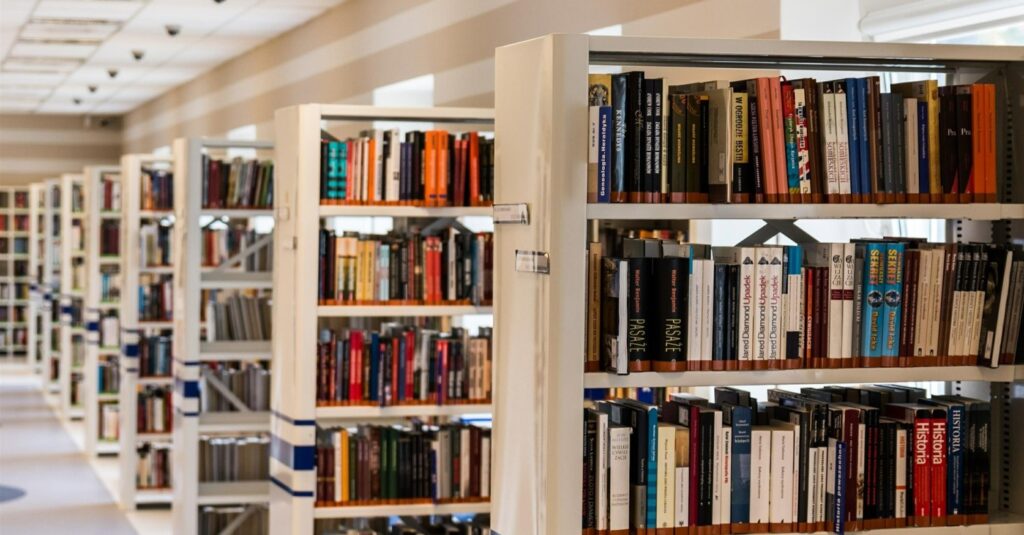
Why Get an MSW and an MEd?
Dual degree programs still represent a significant commitment, but those [...]
Are you thinking about becoming a teacher in San Francisco? Whether you are currently a San Francisco resident, or are thinking about making a big move to the City by the Bay, there are plenty of exciting opportunities waiting for you.
The City of San Francisco has nearly one million residents, 56,000 of whom are K-12 students. This offers San Francisco teachers a major opportunity to make a difference in children’s lives.
San Francisco is the second-most densely-populated city in California. As of 2017, the San Francisco Unified School District (SFUSD) had 76 elementary and early education schools, 13 middle schools, 14 high schools, 14 charter schools, and 19 alternative and juvenile court schools serving 56,000 students. San Francisco schools have an operational budget of $566 million per year, and an additional $258 million in other funds that cover items such as construction and special programs. The San Francisco School District employs 10,000 employees, of which 3,600 are full-time K-12 teachers and 1,300 are K-12 substitute teachers.
The San Francisco Unified School District is committed to focusing on literacy and classroom policies to turn around low-performing schools. The District’s 2012 report, entitled Using Great Teaching to Overcome Poverty, talks about SFUSD’s approach to identifying effective instructional practices, regularly assessing educators, and providing professional development based on specific needs.
Although there are many other opportunities for teachers in cities throughout the Bay Area, including jobs in Oakland, San Mateo, Berkeley, and San Jose schools, this discussion will focus specifically on education within the city of San Francisco.
You must meet California’s teaching credential requirements to teach in San Francisco public schools. The first thing you must do is obtain a bachelor’s degree in education or a related field. If you are planning to teach middle or high school, you may choose to obtain a bachelor’s degree in the field you wish to teach. Once you have completed your education, you can move forward with satisfying the basic skills and subject-matter competence exams, and applying for a preliminary credential. The preliminary credential will allow you to teach for a maximum of five years. In order to obtain a clear credential, which allows you to teach indefinitely, you must complete a Commission-approved educator preparedness program.
Teach elementary school in San Francisco. If you want to teach elementary school in San Francisco, you will need to hold a Multiple Subject Teaching Credential.
Teach middle or high school in San Francisco. A Single Subject Teaching Credential will allow you to teach middle or high school in San Francisco.
Teach special education in San Francisco. If you’d like to teach special education in San Francisco, you can do this by obtaining a Education Specialist Instruction Credential. However, if you are currently a California credentialed teacher in the field of special education, you could also simply add an authorization.
Teach vocational courses in San Francisco. Being a vocational teacher is a great option for those who wish to become a teacher in a specialized field but do not have a bachelor’s degree from an accredited institution. To do this you must apply for a Career Technical Education Teaching Credential.
If you don’t meet the minimum requirements for becoming a credentialed teacher, but still wish to start teaching, you could consider becoming a substitute teacher or doing a paid teaching internship while you are in the process of completing your educator preparedness program. Additionally, being a member of the California Peace Corps can supplant the educator preparedness program in some instances.
If you currently live in San Francisco or another city in California, you can search the California Commission on Teacher Credentialing database for a Commission-approved program. If you currently live in another state, but wish to attend a California teacher credential program, Noodle recommends taking a look at Alliant International University and the University of Southern California.
| University and Program Name | Learn More |
|
New York University:
Master of Arts in Teaching
|
|
|
Merrimack College:
Master of Education in Teacher Education
|
How much do teachers make in San Francisco? This depends on your education level and your years of service within the school district.
San Francisco’s salary schedule for fully credentialed teachers is a combination of education level and years of service. The three base schedules I, II, and III, are correlated with your education level. Once you enter a salary schedule, you will receive annual increases as you increase your years of service. When you complete additional education and move to a new level, your years of experience carry over so that your annual increases are based on total years of service. For example, a first-year credentialed teacher with a bachelor’s degree will receive a base salary of $55,225 per year, and will eventually receive $65,131 after 13 years of service if they do not obtain additional education. A fifth-year teacher with a bachelor’s degree, plus 30 additional units, will make $61,776 per year, and a tenth-year teacher with a bachelor’s degree, plus 60 additional units, will make $77,010 per year.
San Francisco Unified School District also provides the following pay differentials:
According to Glassdoor and PayScale, average salaries may fluctuate depending on the subject you teach. Below, we have provided a comparison to provide more context:
| Glassdoor | PayScale | |
| Elementary School Teacher | $56,538 | $52,734 |
| Middle School Teacher | $53,791 | $51,625 |
| High School Teacher | $56,000 | $60,530 |
| Special Education Teacher | $58,809 | $60,530 |
| Substitute Teacher | $46,225 | $25,400 |
Pathway to Teaching Program. San Francisco offers an amazing program for aspiring teachers called SFUSD Pathway to Teaching. The program administers a one-year credentialing program that trains new teachers to build relationships in the communities local to their schools, and to develop culturally-competent curricula for students in San Francisco’s highest-need schools and subject areas. The program only costs students $5,000. If successful, students will be recommended for a California teaching credential, offered a job, and provided two years of formal induction coaching and support. During the overall teacher training program, excluding six-weeks over the summer, participants will earn a full salary as an intern teacher. Each student is evaluated based on a standard application process; however, in order to apply, you must have a bachelor’s degree, be seeking your credential for the first time, meet legal requirements to work in the U.S., and pass a background check.
Teacher housing. When thinking about teaching in San Francisco, many people ask — how do teachers afford to live in one of America’s most expensive cities? The truth is that San Francisco has a long-standing issue with filling teacher positions due to its high cost-of-living. In 2017, the San Francisco Chronicle reported on a local high school math teacher — a professional and credentialed teacher with a master’s degree — who had become homeless due to unbalanced low wages and unaffordable housing in the city. In an attempt to address this very real issue, San Francisco recently allocated $44 million to build a complex that will include up to 120 apartments designated for classroom teachers and aids. The rent will vary depending on total household income. San Francisco also administers the Teacher Next Door Program, which provides housing assistance to San Francisco educators who are purchasing their first home. If qualified, participants can use the zero-interest loan towards a down payment or closing costs. More details about the program are specified by the Mayor’s Office of Housing and Community Development.
Low-income school loan forgiveness. You can also benefit by participating in the Teacher Loan Forgiveness Program. This supplies student loan forgiveness for up to $17,500 if you work as a full-time teacher for five complete and consecutive academic years in a low-income school, and meet a few other qualifications. The Federal Student Aid database indicates there are currently 106 schools in San Francisco that qualify as a low-income.
According to the Learning Policy Institute, California continues to experience understaffed schools with underprepared teachers. In 2017, 80 percent of California schools reported having a shortage of qualified teachers, and 82 percent feel they hired teachers that were underprepared. In the 2016-17 school year, San Francisco started the school year with 38 open teaching spots, which had to be covered by substitute teachers or other teachers on special assignment. In 2017-18, San Francisco was able to fill almost all of their teaching positions with the exception of five openings. However, this may be due to the city’s new Pathway to Teaching Program, which placed 95 credential students in full-time teaching positions as part of their credential training.
According to EdJoin, there are currently 108 education vacancies in San Francisco. The San Francisco School District is committed to finding high quality teachers to serve historically underserved populations and communities. Updated each year, SFSD lists the schools that are the most difficult to fill. Teachers at these schools receive a $2,000 per year stipend:
Additionally, San Francisco offers a $1,000 annual stipend to teachers who accept a hard-to-fill subject area position. Currently, the hard-to-fill subject areas are Special Education and Bilingual, Crosscultural, Language and Academic Development (BCLAD) teachers.
If you want to teach in San Francisco but would prefer not to work in a traditional public school setting, there are other opportunities to explore.
Charter schools in San Francisco. Although charter schools are more flexible than traditional public schools when it comes to teaching style and curriculum, they are still held to certain standards that are mandated at the state and federal levels. In San Francisco, all charter school teachers must have a bachelor’s degree and a teaching credential. Many teachers are drawn to a charter school setting, because most charter schools were established by teachers or education activists. If you are looking for a fresh and innovative perspective on teaching, a charter school may be a good option for you. San Francisco Unified School District lists all of the city’s charter schools on their site.
Private schools in San Francisco: Private schools are not typically held to the same standards as are public and charter schools, which is why teaching at a private school is sometimes a great option for those who do not wish to go through a credentialing program. However, many San Francisco private schools do require either a master’s degree or a teaching credential. Each entity has a specific set of requirements along with minimum qualifications for teachers, so it is best to reach out to schools directly to see what you need to do to become qualified. For a list of vacant private school teaching positions, visit the California Association of Independent Schools job listing database.
Substitute teaching. If you are interested in teaching in San Francisco but aren’t quite ready to plant your roots in the city, you may consider becoming a substitute teacher for the San Francisco Unified School District. Becoming a substitute teacher allows you to explore different grade levels and find a school that matches your teaching strengths and philosophies. To become a substitute teacher in San Francisco, you must have a bachelor’s degree and pass a basic skills examination. You must also be flexible and willing to work at any school, and be available at least one day per week. Substitute teaching is a great way to establish yourself if you want to become a full-time teacher, but also provides the opportunity to have a more flexible teaching schedule if needed.
The California Education Code defines chronic truancy in students as being absent from school for 10 percent or more of the school year’s days without a valid excuse. San Francisco historically has one of the highest truancy rates in California. Beginning with a city-wide initiative to reduce truancy in 2006, a connection was made between school truancy and public safety. For example, in 2009, the San Francisco Adult Probation Department cited that 80 percent of young adults on probation did not have a GED or high school diploma.
In the 2014-15 and 2015-16 school years, 10 percent of all elementary school kids were chronically absent from school. With this number applied to the 2016-17 enrollment numbers, that would mean around 2,600 elementary school students were absent for 10 percent or more unexcused days in the school year. In addition to addressing the issues that keep kids from coming to school, such as trauma, transportation, and housing instability, San Francisco has been raising awareness and holding parents accountable for their legal obligation to ensure their children attend school. San Francisco has also implemented a city-wide absentee tracking system that prevents kids from falling through the cracks and prompts administrators to follow-up on unexcused absences.
According to a 2013 report, truancy prevention best practices start with early intervention strategies. This means educators need to learn early-on why students are missing school, so that these causes can be addressed before it’s too late. With 55 percent of San Francisco students being part of the free and reduced lunch program, many of the issues contributing to truancy are rooted in poverty. Educators can make a difference in such environments by showing students love, exposing students to new experiences, giving praise, keeping high expectations, and not administering activities that cost money.
Becoming a teacher in San Francisco will lead you to a challenging and fulfilling career. San Francisco teachers are on the front lines ensuring that underprivileged children have a fighting chance, and open the doors that can change students’ futures.
San Francisco embodies an inspiring and innovative climate, and demands hopeful and creative individuals to work towards educational improvements. Becoming a teacher in San Francisco provides an incredible opportunity to positively impact children’s lives, improve communities, and advocate for success within and beyond the classroom. Whether you are already living in the city or thinking about relocating, you can be certain that your San Francisco teaching position will provide you with a long and fulfilling career.
Questions or feedback? Email editor@noodle.com

Dual degree programs still represent a significant commitment, but those [...]

all LIS professionals must be information-literate. They can work in [...]

Elective courses can customize your MLIS degree to a career [...]

Do you intend to work in your community's public library [...]

For decades now, libraries have been attuned to new developments [...]
Categorized as: Teaching, Education & Teaching